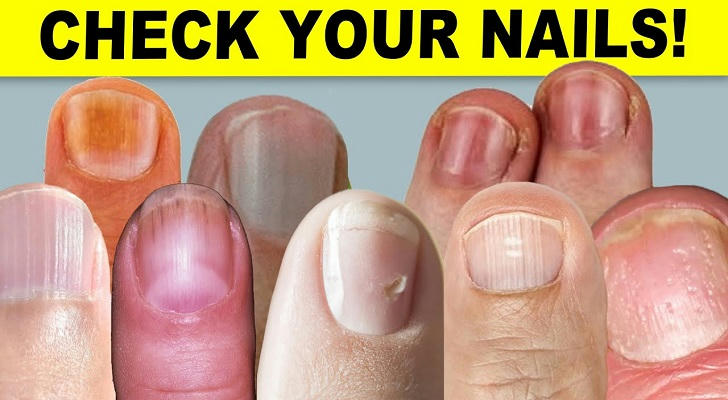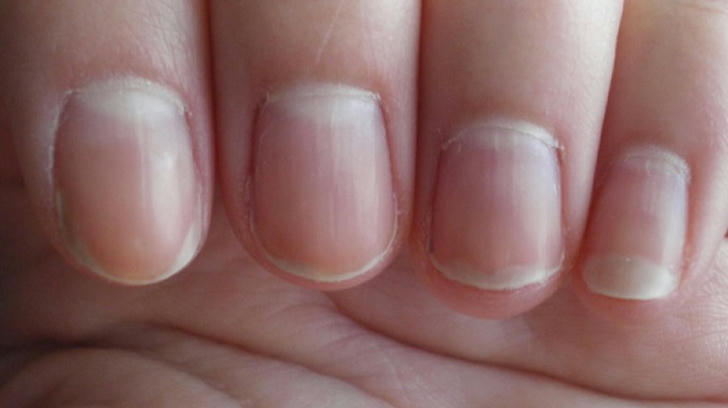What Your Nails Say About Your Health
Nails are more than just a surface for polish. They’re made of keratin — the same protein found in skin and hair — and can reflect what's happening inside the body. Subtle changes in nail color, shape, or texture sometimes point to nutritional deficiencies, infections, or systemic health conditions.
Although nail issues can often be cosmetic or caused by lifestyle habits, persistent or unusual changes may signal something deeper. Knowing what to watch for can help in identifying health concerns early and understanding when to seek professional advice.

Normal Nails: What They Should Look Like
Healthy nails are typically:
- Smooth and evenly colored
- Light pink with a visible lunula
- Free of pits, grooves, or raised ridges
- Firm but flexible
- Attached securely to the nail bed
Temporary changes from polish, minor injury, or weather are common. Persistent changes may signal internal causes.
1. Pale or White Nails
Possible indicators:
- Iron-deficiency anemia
- Liver disease (e.g., hepatitis, cirrhosis)
- Heart failure or malnutrition
When nails lose their pink hue and turn mostly white or washed out, blood flow or protein levels may be affected. According to Mayo Clinic, this is often seen with anemia.
2. Yellow Nails
Possible causes:
- Nail polish staining
- Fungal infection
- Respiratory illness
- Lymphedema
Yellow nails may thicken, grow slowly, or develop a curved shape. The American Academy of Dermatology links yellow nail syndrome to underlying lung or lymphatic issues.
3. Bluish or Purple Nails
What it may mean:
- Low oxygen levels
- Circulatory issues
- Raynaud's phenomenon
- Heart or lung disease
Bluish nails (cyanosis) suggest a lack of oxygen in the bloodstream. This may be temporary in cold conditions or a sign of chronic issues if persistent.
4. Rippled or Pitted Nails
Often linked to:
- Psoriasis
- Eczema
- Inflammatory arthritis
Small depressions or pits in the nail surface may occur with autoimmune or inflammatory conditions. According to the National Psoriasis Foundation, half of people with psoriasis experience nail changes.
5. Dark Lines or Streaks
Possible causes:
- Nail trauma
- Melanin pigmentation (melanonychia)
- Subungual melanoma
While some streaks are harmless, a single dark stripe — especially if it widens or darkens — should be checked by a dermatologist. The Skin Cancer Foundation notes this is more common in darker skin tones.

6. Cracked, Brittle, or Peeling Nails
Potential reasons:
- Frequent water or detergent exposure
- Hypothyroidism
- Biotin or iron deficiency
According to the Journal of the American Academy of Dermatology, biotin supplements (2.5 mg daily) may help improve nail strength in some cases.
7. Spoon-Shaped Nails (Koilonychia)
May signal:
- Iron-deficiency anemia
- Heart conditions
- Hemochromatosis
Nails that dip inward like spoons can reflect a drop in red blood cell levels. Blood tests can help determine the cause.
8. Clubbing (Bulbous Nail Ends)
Could relate to:
- Lung disease
- Heart disease
- Digestive or thyroid conditions
Clubbing causes rounded fingertips and curved nails. It often develops slowly and can indicate chronic illness involving oxygen flow.
9. Beau’s Lines (Horizontal Grooves)
Possible triggers:
- Severe illness or fever
- COVID-19 or pneumonia
- Chemotherapy
- Nail trauma
These lines show a temporary halt in nail growth, and the timing can often be estimated by the groove’s distance from the cuticle.
When to Be Concerned
Seek medical guidance if nails show:
- Persistent discoloration or shape changes
- Pain, swelling, or infection
- Thickening without injury
- Dark streaks that enlarge or spread
- Separation from the nail bed
Nail Health Maintenance Tips
Protect nail health with consistent care:
- Trim nails straight and file gently
- Avoid biting or picking
- Moisturize nails and cuticles
- Use gloves during cleaning
- Disinfect nail tools after use
- Avoid harsh polishes and removers
- Take breaks from polish to observe nail health
Conclusion
Nails reflect more than grooming habits — they offer real clues about internal health. While many nail changes are harmless or temporary, some may point to more serious conditions. Recognizing these signals early supports better health decisions and helps maintain strong, healthy nails in the long run.

References:
- Mayo Clinic – Nail abnormalities.
- American Academy of Dermatology Association.
- Skin Cancer Foundation – Subungual melanoma.
- Journal of the American Academy of Dermatology – Biotin and nail health
- National Psoriasis Foundation – Nail psoriasis.
